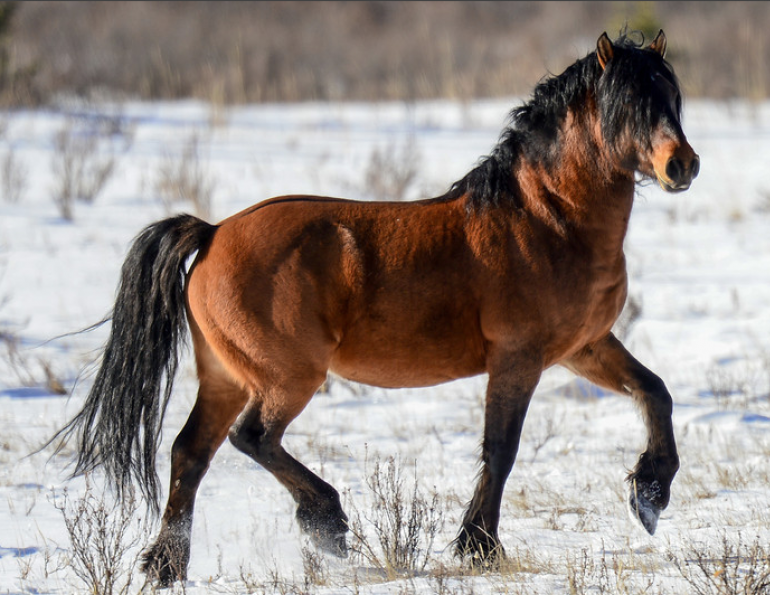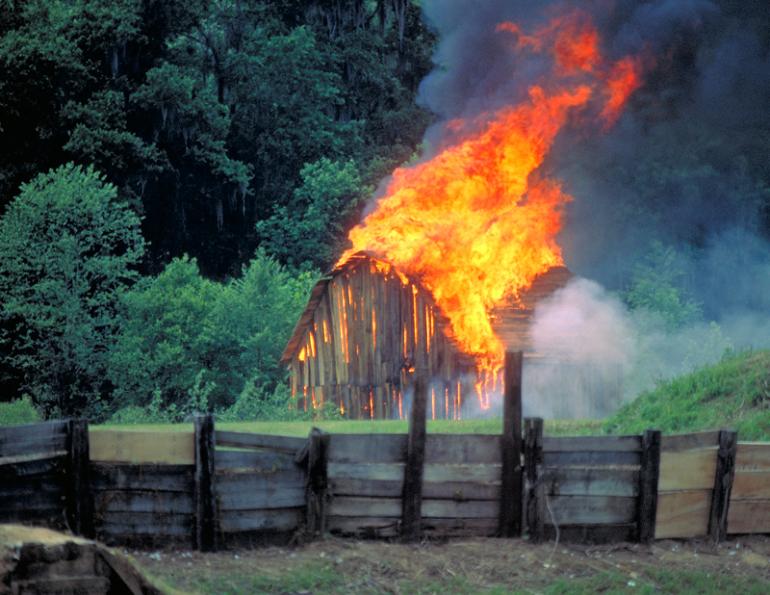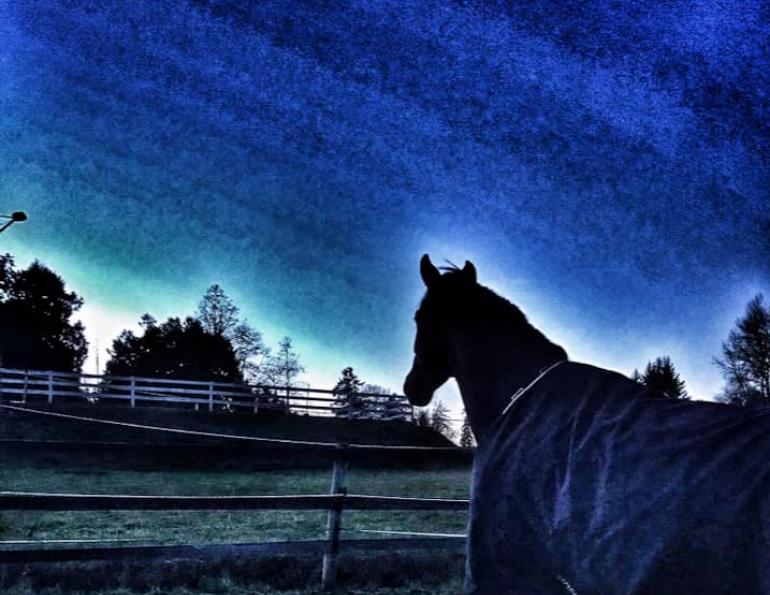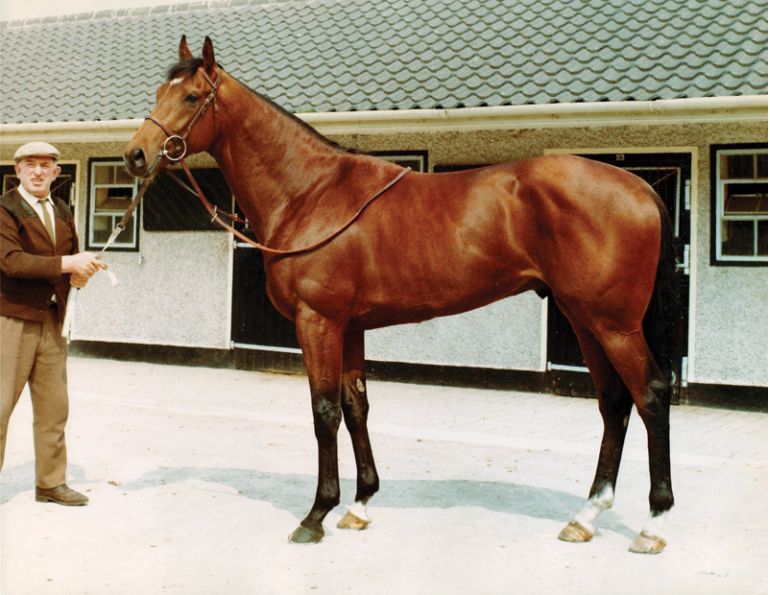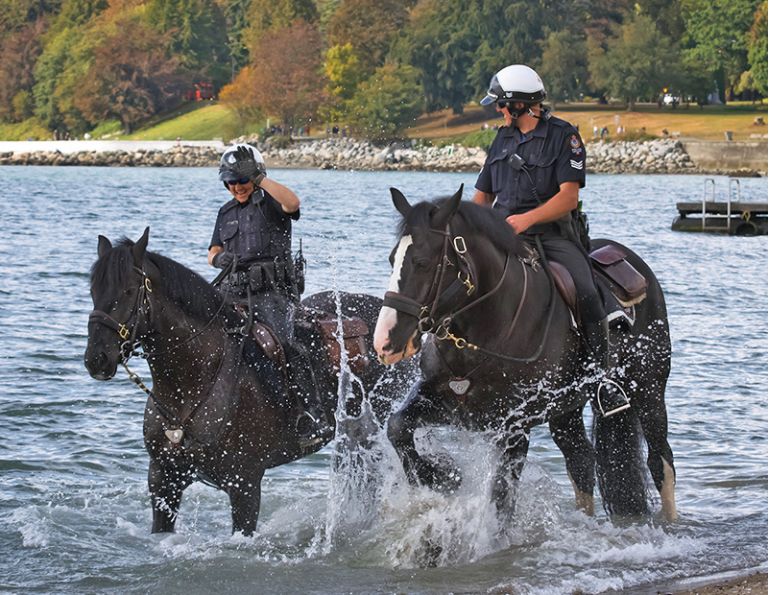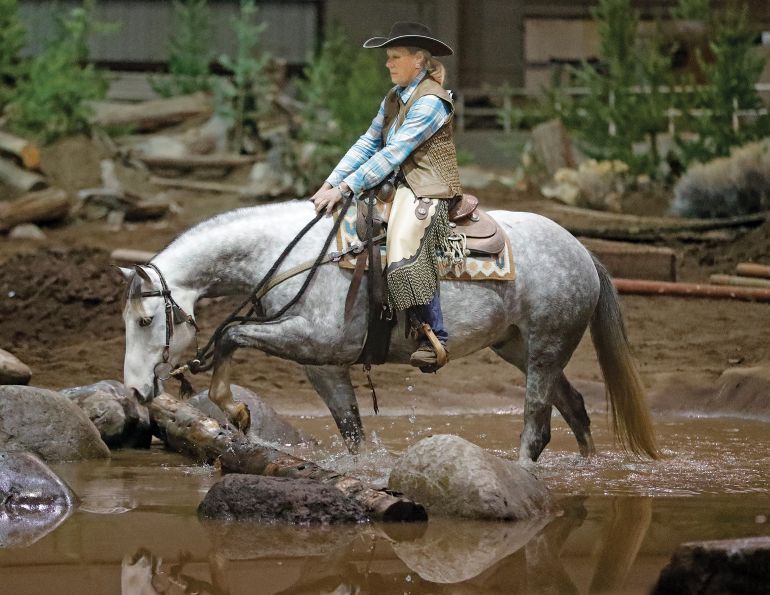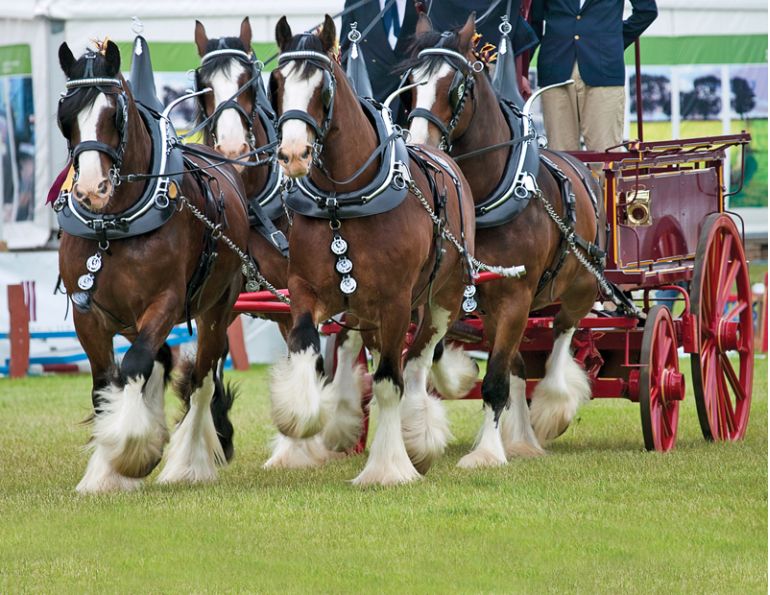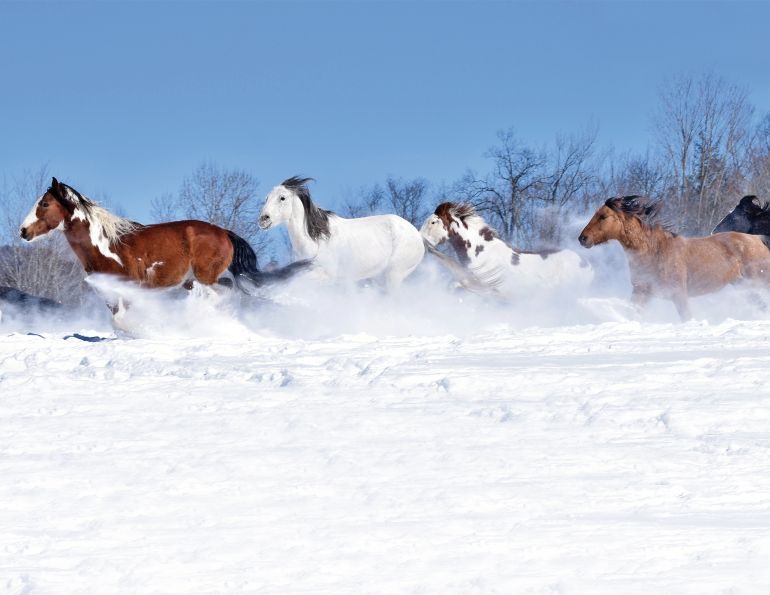This article was originally published 2013. Some of its info may be outdated.
By Margaret Evans
As the Alberta government reviews its management strategy for more than 950 wild horses that roam the Eastern Slopes of the Rocky Mountains, the newly formed Canadian Wild Horse Foundation (CWHF) is getting set to petition the federal government to declare wild horses a heritage species, focusing their goals initially on Alberta’s wild horses.
“The Foundation’s main focus is to actively bring awareness (to the public) of the plight of our Canadian wild horses,” said Adrienne Calvert, Executive Director of CWHF. “We aim to educate the public on the numerous historical contributions these animals have made to our country. CWHF believes all Canadian wild horses are an iconic heritage animal that should be protected for future generations.”
The status of wild horses in Canada has always been a contentious issue of conflicting values between those advocating their protection as an iconic animal of culture and history, and those who see the horse as an invasive species competing with wildlife and livestock for range.
In addition to Alberta, wild horses thrive in the Chilcotin area of British Columbia where, according to the organization Friends of the Nemaiah Valley, some 800 to 1000 horses roam, of which approximately 42 percent can be found within the Elegesi Qayus Wild Horse Preserve declared by the Xeni Gwet’n First Nations Government. Within this population in the Brittany Triangle area are some 200 distinct wild horses believed to carry genetic links to the Spanish horses brought to North America by explorer Hernando Cortez in 1519. Wild ponies also roam in the Bronson Forest of northern Saskatchewan where they received provincial protection in 2009. On Sable Island off the coast of Nova Scotia the iconic wild horses are protected within the Sable Island National Park formed in 2011.
Related: Canada’s Wild Horses - An Uncertain Future

The goals of the newly formed Canadian Wild Horse Foundation are to raise public awareness of the plight of wild horses in Canada (particularly in Alberta) and to petition the federal government to declare wild horses a heritage species that should be protected. Photo: Bob Henderson, President, Wild Horses of Alberta Society
“The wild horse is a charismatic animal with a long and illustrious history in Alberta,” said Catherine Betts, CWHF Founder and CEO. “Wild horses enriched the lives of First Nations people, bore the North West Mounted Police on their trek west, laboured side by side with early pioneers, and carried Canadian soldiers through the horrors of war. Today the wild horse inspires people from all over the province, the country, and the world. History puts the wild horse side by side with the people who made this province what it is today.”
But even more fundamental, and perhaps most important, is the fact that the evolutionary history of horses puts them at home right in the heart of North America. Modern molecular research supports the notion that the horse is genetically equivalent to the ancient horses that lived on this continent at the end of the last Ice Age. That wealth of knowledge in the scientific community has furthered the belief that wild horses should be recognized as reintroduced native wildlife species.
Opponents to horses being free on the range argue that they are feral, alien, or an invasive species. They contend that wild horses overpopulate ranges, compete with wildlife and livestock for grass, and impact tree regeneration and the health of habitats.
Are Horses an Alien or Invasive Species?
The first equids appeared about 56 million years ago in North America. Over millions of years they went through vast changes as they adapted to profoundly altering climates and habitats. Species arose, disappeared, or merged with others. Ultimately, the genus of the modern horse Equus (which also includes asses and zebras) appeared in the fossil record some four million years ago and gave rise to a branch of caballine (true) horses that appeared about two million years ago.
Around the same time, some Equus species dispersed into Eurasia across the Bering land bridge, and some return migrations back and forth followed. But in North America, the caballine horses diversified into separate species leading to the appearance of today’s modern horse Equus caballus exclusively on this continent about 250,000 years ago. Over millennia, a wide variety in size and type of the modern horse continued to evolve throughout North America, and some populations migrated to Asia and spread to Europe.
But in North America, horses became the victim of the disappearance of large mammals between 13,000 and 7600 years ago. Fossils of ancient horses have been unearthed in the Dawson City area of the Yukon (Equus lambei), a small caballoid horse carbon dated to 10,000 years ago, and in southern Alberta (Equus conversidens), dated to 11,300 years ago and killed by early hunters.
Related: Equine Rescues, Sanctuaries, and Shelters
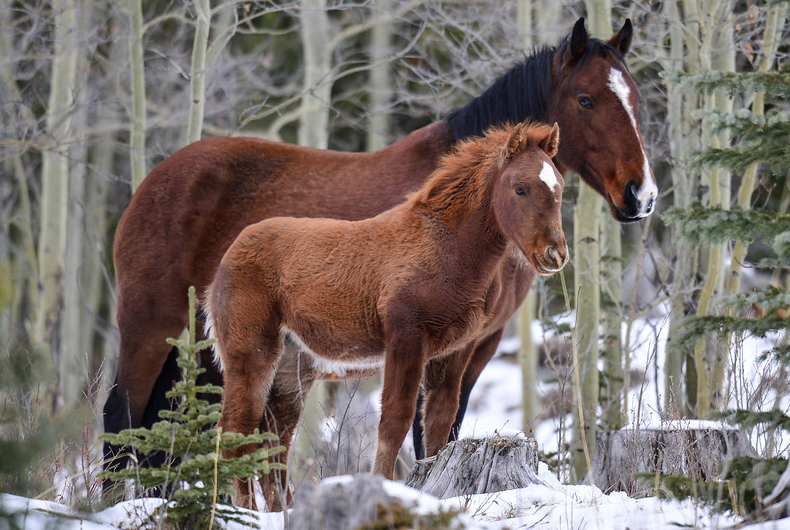
Fertility control, or immunocontraception, has been used with great success to control the population of the wild horses in various parts of the U.S., but as of yet there are no plans to implement a similar strategy to manage Canadian wild horses. Photo: Duane Starr, www.duanestarrphotography.com
The horse did not return to this continent until it arrived with Hernando Cortez in 1519. Those Spanish horses escaped or were turned loose. They rapidly populated the prairies and Great Plains where they settled into their ancestral grassland niche, contributing to the biodiversity of habitats and instinctively forming complex, social, hierarchical bands that defined the ancient behavioural patterns of their ancestors.
According to Jay Kirkpatrick, Ph.D., Director of ZooMontana’s Science and Conservation Center, the most current molecular research and mitochondrial DNA analysis from Europe, the U.K., and the U.S. has shown that today’s modern horse Equus caballus is genetically equivalent to the Yukon horse Equus lambei. No fossil evidence exists for the origin of Equus caballus anywhere but in North America.
“I am personally convinced on paleontological grounds that Equus caballus is a native North American species,” said Ross MacPhee, Curator and Professor, Mammalogy/Vertebrate Zoology, American Museum of Natural History.
Do Wild Horses Overpopulate Ranges?
Wild horse populations are managed in Alberta through culling by the issuance of capture licenses. But even though the province advocates their protection from cruelty, it is widely reported that wild horses are shot and left to die, an issue that inflames those advocating for their greater protection.
“Like all animals, feral horses have protection from cruelty under the Animal Protection Act, the Criminal Code of Canada, and the Stray Animals Act,” said Carrie Sancartier, Public Affairs Officer, Alberta Environment and Sustainable Resource Development. “The Government of Alberta works to maintain sustainable horse populations through humane, regulated capture activities. Our goal is to balance the needs of feral horse populations, native wildlife, and other land users. In the 1990s, government put in place the Horse Capture Regulation under the Stray Animals Act. The regulation has been effective in ensuring the humane capture and removal of feral horses. Environment and Sustainable Resource Development (ESRD) has decided not to open a capture season for 2012 to 2013.”
Managing horse populations in a sustainable way is the professional norm in any wildlife or resource management program. But what CWHF takes issue with is the entrapment and disposal of surplus horses, many of which, they claim, go for slaughter.
Related: How to Safely Refeed the Malnourished Horse
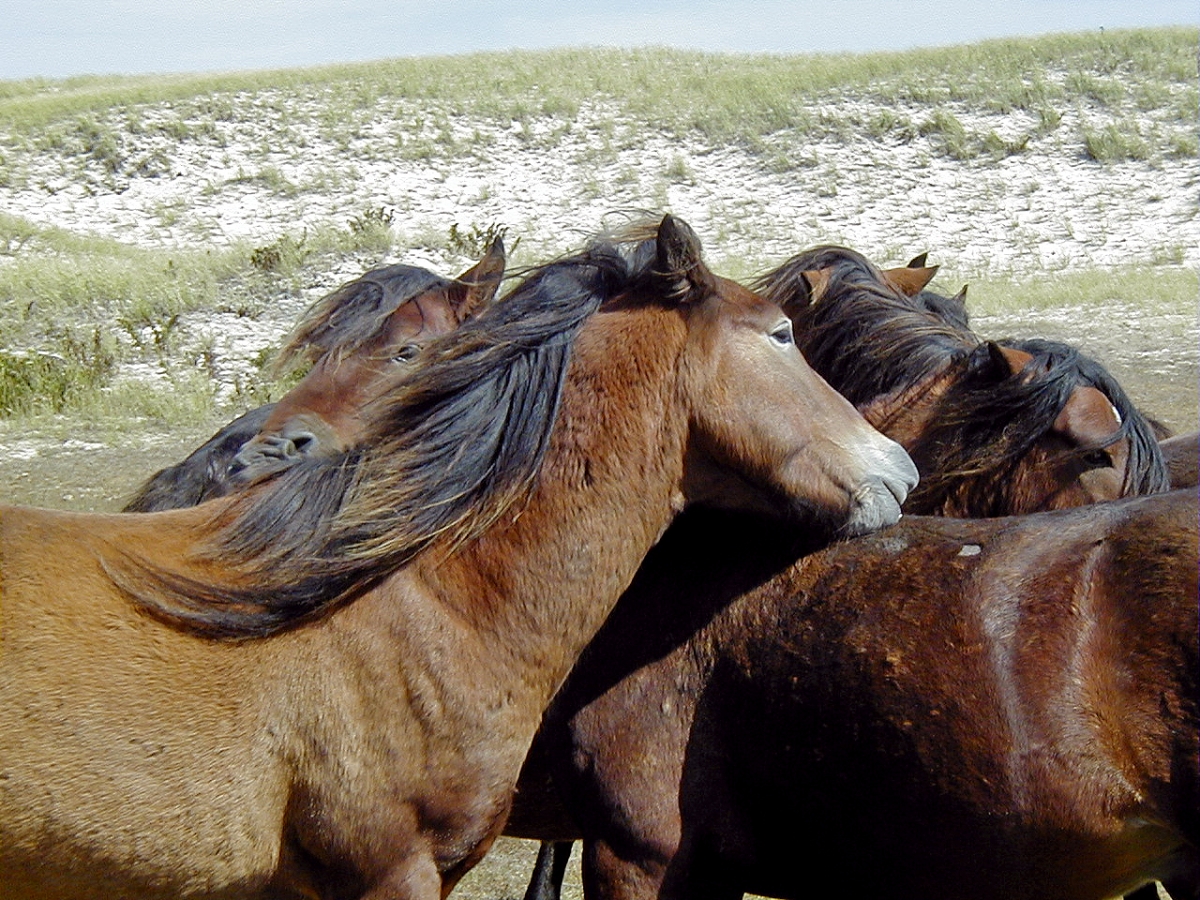
The establishment of Sable Island National Park Reserve in 2011 ensured the continued protection of the wild horse population of Sable Island. Photo courtesy of Zoe Lucas, Sable Island Green Horse Society
“There is a count done each year,” said Betts. “ESRD seems to have a number in mind when they determine the number of horses that will be taken in that year’s cull. The cull is called the Feral Horse Capture Program and the guidelines for the trapping season are set out within this program. Actual trapping licenses are issued to persons who set up and bait capture pens to lure the wild horses in. Once entrapped in the pen, most of the horses are transported for slaughter at a kill floor located in southern Alberta. The number of horses to be sent to slaughter is set based on the count. ESRD trusts the trappers to use methods considered humane in the capture and transport of the horses of Alberta.”
But there are ways to control and lower population numbers without ever having to cull, trap, or kill a single horse.
Humane population management has been shown to be extremely effective through fertility control, or immunocontraception, a method developed over 20 years ago by Kirkpatrick and his team. The strategy has been used with great success to control the population of Maryland’s wild horses on Assateague Island off the U.S. east coast. There, since 1994, the National Park Service has used the fertility control vaccine pig zona pellucida (PZP) annually on targeted mares. From 1994 to 2013, they have reduced the population from 175 animals to 103, a reduction of almost 41 percent, all without the loss of a single animal. The vaccine has no side effects and is reversible, bringing a mare back into a fertile state. The vaccine program is still ongoing.
In the western U.S., the fertilization control program has been used successfully by Kirkpatrick’s group to manage various horse herds under the jurisdiction of the Bureau of Land Management (BLM). But, given costs, BLM has asked the group to develop a drug that will give several years’ fertility control.
“BLM wants a contraceptive that you can administer once and get three to four years of fertility control out of it,” said Kirkpatrick, adding that this research is still a work in progress. “(But) we are making progress with the standard native PZP, treating lots of horses (including) some BLM herds, (horses on) tribal and sanctuary or preserve lands, and now wild horses living on private land.”
Do Wild Horses Compete with Wildlife and Damage Habitats?
Horses are grassland grazers and their digestive system allows them to graze on a wide variety of vegetation from coarse grasses to wetland reeds. Their habit of grazing and moving generates stands of grasses of varying thicknesses and lengths. Their movements create trails through the cover, opening up tracts of meadow that direct sunlight to the exposed ground, and trigger the sprouting of seeds and growth of young shoots. This mosaic of habitat attracts other wildlife – insects, small rodents, mammals, birds, and, in wetland areas, aquatic life.
The efficiency of horses as a habitat enhancer hasn’t gone unnoticed by those who see an opportunity for horses and other large mammals as contributors to conservation grazing programs. In the U.K., Marwell Zoological Park offered its captive-bred Przewalski’s horses (Mongolian wild horses) to graze the neglected Eelmoor Marsh. In 1995, five horses and some highland cattle were turned loose. After a decade, there was such a dramatic improvement in the biodiversity of the area that rare and vulnerable plants returned, along with insects and birdlife.
Related: Obijwe Spirit Horses
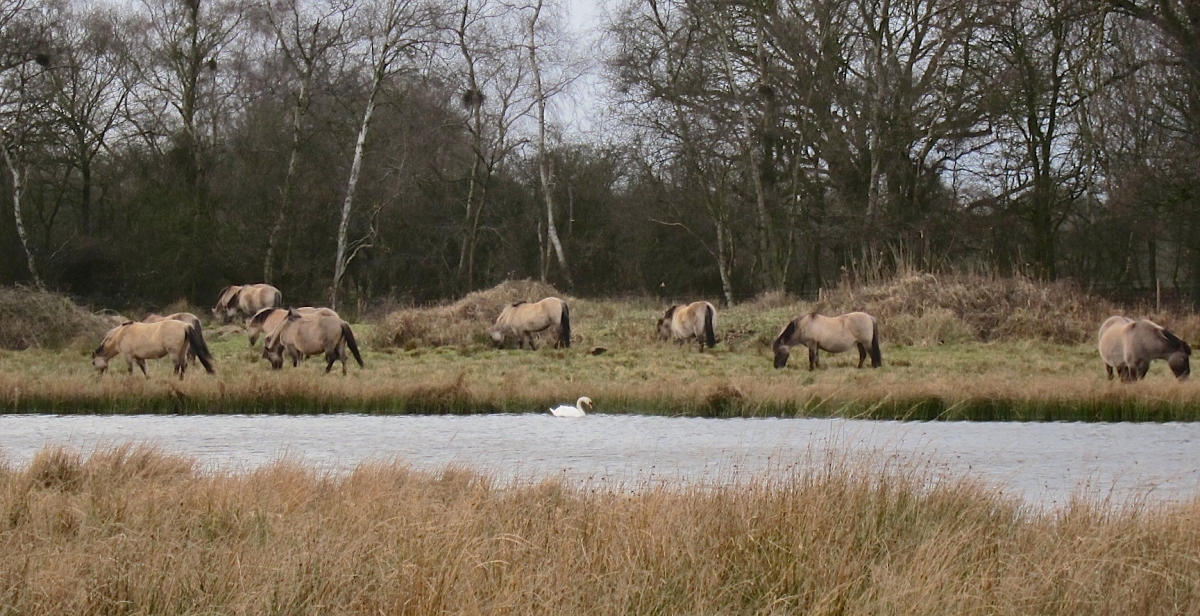
Wild Konik horses imported from Holland in 2002 formed part of a conservation grazing program for damaged marshes and meadows in the U.K., with dramatically positive results. Despite this, and other similar programs around the world, the use of wild horses as a habitat enhancer has not yet gained traction in Canada. Photo: Alethe/Wikimedia Commons
At the same time, conservation grazing programs using the hardy Polish Konik horses bred back from the ancient Tarpan wild horse had gained traction in Europe. They, too, were dramatically improving damaged wetlands. Seeing a great, natural conservation opportunity, Wildwood Trust in Canterbury, Kent, imported a band of 12 Koniks from Holland in 2002 and used them to graze the damaged marshes and meadows of the River Stour. The results amazed biologists as rare birds returned to the ecological niches of grasses, sedges and reeds created by the horses’ grazing patterns. Today, bands of Konik horses are grazing damaged wetlands and meadows from southern England to Scotland.
This natural pattern of grazing is widespread among equids. On the African savannah, herds of zebras not known as picky eaters will move into regions ahead of other grazing species to graze on rough grasses and woody plants, opening the ground to sunlight where seeds sprout into young shoots that draw in other grazers such as gazelle and wildebeest. Zebras play a critical role in triggering the pattern of plant succession for the benefit of an entire community of animal species.
The concepts of conservation grazing and the use of horses and other large mammal grazers as habitat enhancers have not yet gained traction in Canada. But with proper management protocols, the program could go a long way toward economically improving damaged habitats and generating a rich biodiversity for the benefit of an entire wildlife community.
Meanwhile, the co-founders of CWHF are focusing on awareness and education of the status of horses today.
“We plan to bring ongoing awareness through the use of media, education programs, and monthly newsletters to Canadians from BC to Newfoundland,” said Betts. “CWHF is also building a resource website and welcomes opportunities to work within the community. We are currently working on a new initiative to bring the wild horses into the Canadian classroom, beginning right here in Ontario. And there is a federal petition in both official languages calling for Alberta’s wild horses to be designated a Canadian Heritage animal. This petition will circulate until early in August.”
Future programs include a horse rescue program, engaging horses in equine psychotherapy to help at-risk youth and veterans, establishing a safe haven for culled wild horses, and profiling wild horses in the ecotourism industry.
Calvert said that the cutoff date for their petition is August 1, 2013. “Our goal is 10,000 signatures. Our petition will be presented in September 2013 when the House comes back into session. To further the significance of our petition, we will also be providing copies of the 2800+ international signatures received on our www.change.org petition.”
Bett said that before a petition can be presented by a Member of Parliament, it needs to be reviewed by the Clerk of Petitions in Ottawa to be certified for correct content and form. “CWH’s federal petition has already cleared this process. The government should reply within 45 days after the petition has been presented. From there, the Legislative process is structured but complicated with the Bill passing through cabinet approvals and multiple readings. The whole process can take up to four years!”
What Defines a Native Species?
According to Kirkpatrick, a native species is defined by, a) where it originated, and b) whether it co-evolved with its habitat. The horse did both, here in North America, certifying its heritage as a native species.
The true nature of the horse and its unique native heritage is not about whether it is a wild horse, a range horse, or ponies loose in a field. It’s not about whether it is domestic, on the show circuit, or has a life on the race track. It’s not about whether it is a working cow horse, roping horse, or cutting horse. Neither is it about being feral, a human construct with no basis in biological science but a term used only to reinforce its marginalized stigma. At the very least, Canada’s wild horses deserve the heritage status that CWHF is seeking. But in reality, the horse, with its long, rich genetic heritage, is quite simply a reintroduced native North American wildlife species.
Related: Good Deeds: Feeding Wild Horses
Related: Alberta's Wild Horse Management Plan
Main photo: Duane Starr, www.duanestarrphotography.com.
This article was originally published 2013. Some of its info may be outdated.



